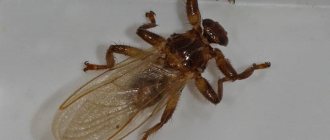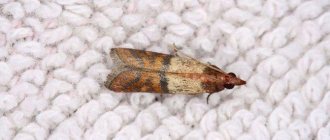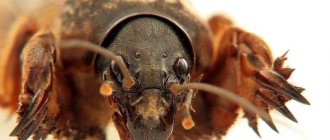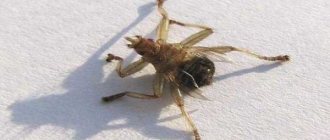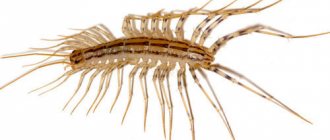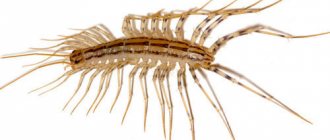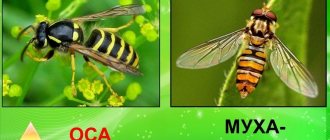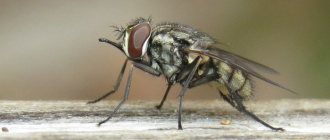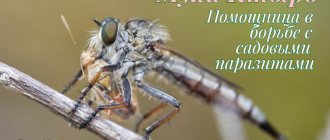Moose ticks are not actually ticks at all. This is a separate species of insects that belong to the order Diptera, not arachnids. The parasites got their name due to some external resemblance to ticks and their diet. They feed only on blood. Deer bloodsuckers have not yet been studied well enough, but entomological science still has some reliable facts about them.
- Deer bloodsuckers are viviparous insects.
- They lay a larva ready for pupation on the body of an elk or other ungulate, which feeds on its blood, and then falls to the ground and there develops to the adult stage.
- Due to the structure of the body, the moose tick is practically invulnerable to physical impact; it is very difficult to crush it with a slap of the palm, like a mosquito or fly.
- Since the parasite feeds on blood, it can most often be found in areas where the main source of food lives - wild and domestic ungulates.
- The pest can always be found on elk and deer.
- Bloodsuckers navigate by heat and smell and can attack several dozen individuals.
How to distinguish this pest from flies, ticks and other insects? Are bloodsuckers dangerous for humans and how to deal with them if they appear in an apartment or bother you in any open-air areas?
What does a deer bloodsucker (moose fly) look like?
Deer bloodsucker or moose fly, photo with wings
The size of the pest is 3-4 mm. It looks like a fly with a flattened body. It is due to its flattened shape that the parasite can withstand severe pressure from above. The covers are colored brown and have a glossy sheen. They are quite elastic and stretch significantly during feeding and during pregnancy. There are 3 legs extending from the chest on each side, there is a thickening on the hips, and claws are present. The wings are well developed, transparent, with a small number of veins, about 5.5-6 mm long.
The head of the moose fly is directed forward and flattened, like the body. The head of the bloodsucker is decorated with 2 eyes, located on the sides; they occupy a quarter of the entire head. The antennae are hidden in the frontal sockets, so they are almost invisible. The mouthparts are piercing-sucking type.
Lifestyle of a bloodsucker
The deer bloodsucker fly can be found in the European part of Russia, Siberia, Primorsky Krai, Scandinavia, North America, and the northern regions of China. The fly is active during the daytime.
She is not afraid of sunlight, but still prefers shady places with high humidity , so she chooses forests (most often wetlands) for her habitat. The number of insects is directly affected by the number of moose and deer in the selected area.
Bloodsuckers find victims by smell and warmth. Once on the animal’s body, the moose fly hides in the fur, grabs it with its paws and begins to drink blood. Usually the insect does not leave the chosen animal for the rest of its life.
Reproduction of deer bloodsucker
Females produce several larvae during their lifetime. The deer bloodsucker has viviparity, i.e. she carries the egg to a pre-pupal state and only then gives birth to it. All the pupae need to do is harden and complete the pupal stage. At a time, the female lays only one prepupa, after which the next one begins to mature in the uterus.
The larvae mature in August-September. By mid-September, newborns are already growing wings. It is during this period that the greatest activity of deer bloodsuckers is observed. In general, in Russia, larvae hatch between August and October.
Question-answer section
To avoid collisions with moose parasites, it is necessary to learn more about the peculiarities of their life activity. All questions can be asked to an entomologist on the website online.
How is it different from a real tick?
Alisa, 34 years old, Rostov-on-Don. “The main difference is the wings of the moose bloodsucker. But if she has already attacked you or an animal, then the wings are shed. You can count the legs – a true tick has 8 of them. In addition, the limbs themselves of arachnids are thin and shorter.”
There is a moose flea in my hair, what to do, how to get rid of it?
Olga, 38 years old, Vladimir “When an elk tick attacks, it is somehow easier to notice and remove it on the skin. How do you remove it from your hair?” “The principle is the same: use tweezers or thread, in this case you need to ask one of your relatives to do it. It is necessary to open the area first so that the hair does not interfere.”
How to identify a moose flea bite?
Vera, 36 years old, Moscow. “Externally, I can, in principle, distinguish the bloodsucker-elk tick. How can you recognize its bite? “The main difference is the formation of a papule at the point of skin puncture. In addition, immediately upon being bitten there is pain (but not in all people) and a burning sensation.”
Deer bloodsucker in the apartment! Is it possible?
Vera, 35 years old, Kirov. “I often find blood-sucking pests in my apartment. How do they get there if they live mainly on animals in the forest and households?” “It’s very simple - parasites attack birds, so they spread quickly. Sometimes such pests are brought home on clothes. I hope you manage to get rid of them."
Lifestyle of the deer bloodsucker
Deer bloodsuckers attack exclusively during the day; at night they sleep. Individuals of both sexes feed on blood. Moose flies usually attack artiodactyl animals belonging to the cervid family (elk, deer, roe deer, deer) and cattle. Less commonly they feed on the blood of wild animals, for example, the blood of bears, wolverines, wild boars, badgers, and foxes. In addition, deer bloodsuckers can attack goats, sheep, dogs and even people. The pest sometimes parasitizes forest birds.
Although the moose fly can attack a person and feed on his blood, it cannot complete its reproductive cycle and produce offspring.
Interestingly, when it gets on the skin, the parasite sheds its wings, breaking them off at the base, and is held on to the victim with the help of its paws, which cling to the hair. For this reason, it can easily be confused with a tick.
Despite the fact that the parasite has wings, it flies very poorly. The deer bloodsucker prefers to wait for prey, sitting in the grass.
Usually the parasite is attached to its host and rarely spreads to other individuals. However, if a bird of prey kills its prey, the bloodsuckers on it move to a new host.
Deer bloodsucker, side view
Moose fly, appearance
Deer bloodsucker on hand
Useful video
What does a moose fly look like and how to recognize it in the video below.
Sources
- https://ParazitDoma.ru/vshi/losinaya-vosh
- https://misterklop.ru/klesshi/olenya-krovososka-ona-zhe-losinyj-kleshh-s-krylyami-ona-zhe-losinaya-bloha-ona-zhe-muha-kleshh-kak-ponyat-kto-presleduet- zhivotnoe-i-chem-opasno-dlya-cheloveka-osnovnye-metody-borby-s-nasekomym
- https://notklop.ru/vshi/vidy-vshej/losinye-vshi/
- https://zelenplaneta.ru/vshi/losinaya-vosh.html
- https://nasekomye-vrediteli.ru/losinaya-muha.html
- https://nowifi.ru/pervaya-pomosch/ukusy-i-allergiya/153-losinye-vshi.html
- https://netblohi.ru/vshi/sredstvo-ot-losinyih-vshey.html
- https://lifeinsect.ru/ukusy-losinoj-vshi.html
- https://yachist.ru/parazityi/predstavlyaet-li-opasnost-dlya-cheloveka-losinaya-vosh/
- https://hlopklop.com/o-vshah/losinye.html
How dangerous is the deer bloodsucker for humans and animals?
The pest prefers to feed on the blood of animals. It attacks people by chance when there are no deer, elk or wild animals nearby.
Deer bloodsucker attack on animals
The bloodsucker breeds on the body of large ungulates. The moose flies that parasitize the host are divided into pairs: the males are firmly attached to the females.
If a large population forms on the body of an animal, which continues to reproduce and regularly drinks blood, then the animal experiences serious discomfort, it stops eating and sleeping normally. Deer bloodsuckers feed 15-20 times a day, sucking 0.2-1.5 mg of blood at a time. As a result, some animals experience exhaustion, and young animals stop growing and developing. Regular blood loss in rare cases can lead to the death of the animal. Redness of the skin and papules appear at the sites of bites. The skin and fur of animals become heavily contaminated with parasite excrement.
The pest usually hides in the hair of ungulates on the neck and back, since these places have longer hair. Up to 1000 pests or even more can hide on one animal. The parasite feeds on the blood of the animal for 5-6 months.
Many types of bloodsuckers cause significant damage to animals. A pest that parasitizes sheep completely depletes the animal over several life cycles. As a result, the sheep develop skin inflammations and lose their wool.
Attack of a deer bloodsucker on a person
Deer bloodsucker (moose fly), appearance without wings
Although the moose fly will not specifically attack a person, it may well be a parasite on humans. Hunters are often attacked while cutting up their prey. In addition, a fly can attack a person in motion, because it reacts to movement and heat. Flies usually end up on people by mistake, so adults are more likely to be attacked than children.
The deer bloodsucker attacks unnoticed. Flying around a person, the parasite selects a landing site and then quickly sheds its wings. A person may think that he has brushed off an annoying fly, but after a few minutes the bloodsucker will dig into the skin. The bloodsucker rushes at people only in the absence of animals, simply confusing the victim. Pests often attack in a small flock.
Once on a person, the bloodsucker usually moves upward, trying to get into the hair or under clothing. A moose fly cannot be frightened by sudden movements, and it is not so easy to remove it. She doesn’t start biting immediately, but after about half an hour or an hour.
There is no identical reaction to a bloodsucker bite. Some people tolerate it easily, forgetting after a couple of days, while others suffer for several weeks. The consequences of a bite are also different and depend on individual sensitivity to the parasite’s saliva.
Human reaction to a moose fly bite:
- itching;
- red swelling at the bite sites;
- papules;
- increase in body temperature.
It happens that at first the bite of a deer bloodsucker is practically unnoticeable, but after a few days signs begin to appear: itching, papules, redness, etc. In some cases, a person may develop dermatitis and other skin diseases.
If a person is bitten by an elk fly several times in a row, the reaction to the parasite’s attack becomes stronger and the consequences are more severe.
Fighting methods
Sometimes ectoparasites settle on private property and then enter the house.
Read more ► How to remove a tick from a person at home correctly
To prevent their occurrence, a set of measures is carried out:
- The surrounding area is treated with powerful insecticides. Particular attention is paid to those places where grass grows.
- Tall grass needs to be mowed because the elk sucker likes to sit there.
- The moose bloodsucker is afraid of humidity. Regular spraying of trees and shrubs will help get rid of it.
- Wormwood and tansy planted around the house will repel the bloodsucker, as they do not tolerate the smell of these herbs. Insects are also irritated by the pungent odor of garlic. A tincture is prepared on its basis, which is used for spraying and watering plants.
Liquid carbon dioxide will help drive ticks out of your home. At a temperature of -50 °C, all dangerous insects will leave the room or die.
What to do if you are bitten by a moose fly?
If there is a parasite on the body, then, of course, it must be removed. There are several methods you can use to remove moose flies from your body:
- using tweezers. To do this, you need to hold the insect with tweezers and carefully pull it out with twisting (counterclockwise) movements;
- using thread. Fold the thread into a loop, secure it to the insect and remove the bloodsucker using rocking movements;
- using rich cream or oil. You need to apply a thick layer of cream or oil to the affected area of the skin and wait. Due to the oil film, the moose fly will stop receiving oxygen and will detach from the body after about 15 minutes.
The parasite should be removed carefully, as otherwise there is a risk of incomplete removal of the parasite.
Afterwards, the bite site must be treated with an antiseptic: hydrogen peroxide, chlorhexidine, etc. To relieve itching and swelling, you can apply ice, treat the skin with aloe juice, calendula tincture, or a special ointment (“Rescuer”, “Ambulance”, “Zvezdochka” and etc.). If the symptoms after a bite are pronounced, it is recommended to take an antihistamine. If necessary, consult a doctor.
Types of parasites
There are a huge number of these insects, and many believe that they are all representatives of different species. In fact, there are not that many families. They are often given names depending on where they live. Let's look at the most popular types of bloodsuckers.
- Home or bed. There is no such separate species. This is what people call the varieties of fleas in the house that feed on the blood of people, dogs and cats. They live in animal fur, on pet bedding, in carpets, upholstered furniture, on bedding, under baseboards, jumping from an infected animal to a person.
- Human. Household fleas live in residential areas. They parasitize people, but in the absence of the main host they do not disdain domestic animals. Preference is given to pigs, since the skin of these mammals, like that of humans, does not have wool or coarse hair. This greatly simplifies the feeding process. Flea bites are painful, cause redness, swelling, allergic reactions, and can transmit diseases dangerous to humans.
- Feline. They live mainly in the fur of cats, but are able to feed on the blood of other animals. If a cat has fleas, the animals behave restlessly: they itch, get nervous, trying to free themselves from uninvited guests.
- Canine. The flea looks like all other species. It lives in the fur of dogs and is the most survivable insect, as it can go for a long time without food. In the absence of the owner, it attacks other animals and humans. Sometimes so-called white fleas may appear on a dog. According to the description, they are similar to these parasites, but they are a different pest. It's called a lice eater. Its bites are also painful and cause severe itching.
- Earthen ones. They inhabit basements and upper layers of soil. They love damp places, but can also appear in apartments. Usually, residents of the first floors are surprised to find these guests on their territory. Fleas are used as hosts for wild animals, cats, dogs, and rats. It is difficult to notice parasites because they hide in the ground.
- Chicken. Insects that live on poultry and hazel grouse do not need to move around in the feathers for a long time to find a favorable place to bite. They prefer to feed on blood near the eyes and beaks. The most delicate skin is there. But parasites often attack other warm-blooded animals, budgies.
- Rat. These flat fleas also inhabit basements, where they find their main hosts, rats. But they can parasitize dogs, cats and people. They are divided into two groups: European and southern. The latter species is the most dangerous, as it can carry serious diseases, including bubonic plague.
- Sandy. The inhabitants of the sands have a lighter color, since the shell fades after being exposed to sunlight for a long time. These fleas are native to Thailand and Vietnam. Numerous tourists do not allow insects to die of hunger. Bloodsuckers bite people on the legs, arms, and buttocks, since it is impossible to notice the insect in the sand. The bites are painful, cause itching and suppuration if the wound gets infected.
Type of flea
Interesting facts about fleas are very educational. The tiny insect can pull 160,000 times its own weight. For a person, this would equal 2,689 double-decker buses. A flea is able to jump non-stop 30,000 times to a height that is 150 times its own height.
Types of fleas and their control are often discussed on forums. If the premises are heavily infested with parasites, then it is best to contact special services that will professionally disinfest all surfaces, clothing and furniture using effective modern means. But first you need to determine the types of fleas in the apartment in order to use the most effective insecticide and get rid of fleas in the apartment.
To combat parasites in animals, various shampoos, drops on the withers, collars, and tablets are used. Powders. There is no point in delaying flea removal activities, since 25 females per month can produce offspring of a quarter of a million.
How to protect yourself from a moose fly attack?
When heading into the forest, you should cover all parts of your body as much as possible. It is recommended to wear overalls, pants and a jacket with long sleeves; you need to tuck your pants into your socks; the cuffs on the jacket should be tightened with an elastic band so that they fit snugly to your arms. It is also advisable to cover your head with a scarf or hat.
Repellents such as “Raptor”, “Komaroff”, “Argus”, etc. will also help to avoid insect attacks.
After each outdoor recreation, you should carefully inspect your clothing and body surfaces in order to quickly detect and remove the parasite.
Prevention
To protect yourself from deer fleas, you need to follow the following preventive measures:
- You should not visit the forest during the period when insects are active, which usually occurs at the end of summer and beginning of autumn.
- Choose suitable clothing. It should be as closed as possible and made of dense fabrics.
- Use repellent before going into the forest. Use them not only on skin, but also on clothes and accessories.
- It has been proven that deer fleas can attack humans only during daylight hours, since they are to a certain extent guided by vision when choosing a victim. Therefore, if you avoid walking in the forest during the day, you can protect yourself from parasites.
- Hunters are at particular risk. Cases of mass attacks on humans are often recorded during the cutting of artiodactyl animal carcasses, so it is advisable to be fully armed during such a procedure. To do this, put on a mosquito net, protective suit and gloves in advance.
Now if you encounter deer fleas, you will know how to get rid of them. But it’s better to worry about protection in advance and follow preventive measures.
Parasite behavior
Appearance of a flea
Not everyone knows what fleas look like. People who do not have animals in their homes usually have very general ideas about these insects. A person may not know whether fleas have wings. He, unlike a zoologist, is not interested in the question of the number of legs a flea has. But this does not mean that he will never encounter this phenomenon in his life. Parasites can be accidentally brought home from stray dogs and cats from the street. Infection is possible while relaxing in the forest or on the beach.
Fleas are found in all seasons of the year. Both males and females feed on blood. They live in the nests of birds, squirrels, in the burrows of gophers, hamsters, jerboas and other small animals, and are distributed throughout the world. The main hosts are mammals. Representatives of fleas have been found even in Antarctica. But against the general background, the colony of insects that bite humans is not so numerous.
The feeding process can last from one minute, if the parasite is disturbed, to several hours. Some species require multiple meals, others are rarely saturated, but in excess, without even having time to digest the incoming blood. There are insects that leave the owner after their meal, but there are also those that remain in the animal’s fur until the next attack of hunger.
On the Internet you can find any information about what kind of fleas there are, where they live, and the characteristics of this type of blood-sucking insect. In real life, they are difficult to see without special devices, so you can see the fleas in the photo in a greatly enlarged form.
Fleas
